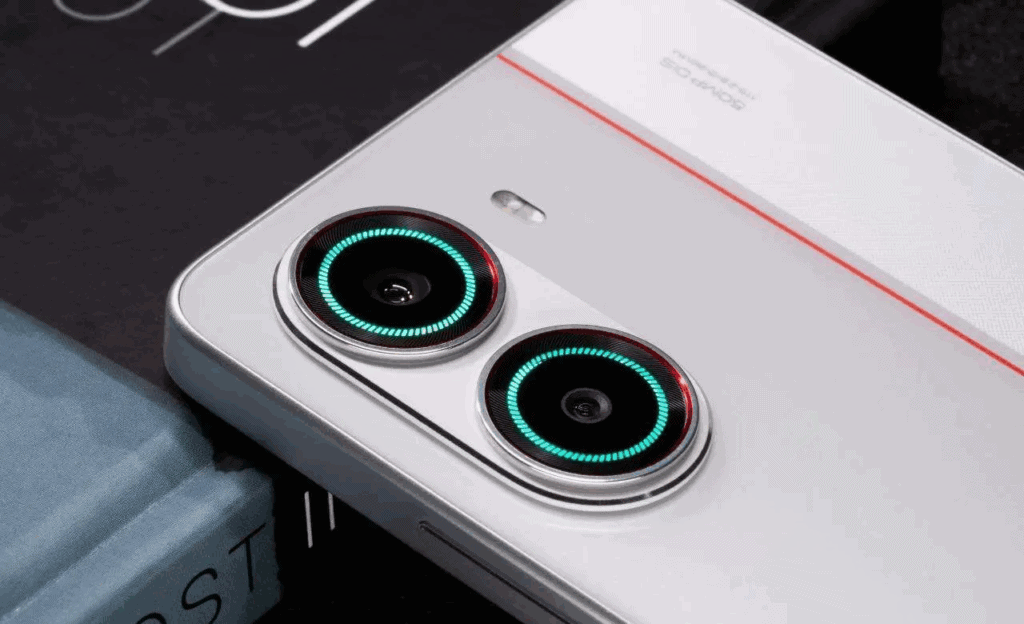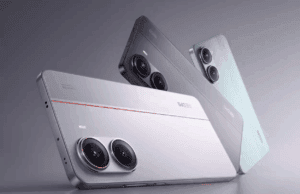The Redmi Turbo 4 Pro has been turning heads in the smartphone market, mainly due to its high-end specifications at a seemingly attractive price. Powered by the new Snapdragon 8s Gen 4 chip, it boasts a sleek metal frame, high refresh rate display, and fast charging support. On paper, it’s positioned as a serious contender in the mid-to-flagship range. However, beneath that shiny spec sheet lies a collection of issues that many users and reviewers have flagged. This post dives into the major cons of the Turbo 4 Pro that could make you think twice before purchasing.
Table of Contents
Overheating: A Serious Deal-Breaker
One of the most glaring issues with the Redmi Turbo 4 Pro is its tendency to overheat. Under moderate to heavy usage, temperatures can soar to uncomfortable levels, often reaching 48°C to 49°C. For most users, especially mobile gamers, this is not just an annoyance – it’s a usability nightmare.
The problem is intensified by the phone’s metal frame. While it adds a premium feel to the build, it also conducts heat much more efficiently than plastic or composite materials. As a result, the heat isn’t just trapped inside the device; it’s transferred directly to your hand. Extended gaming sessions become a test of endurance rather than enjoyment.
Thermal throttling is another major consequence. Several users report that during benchmark tests and gaming, apps either crash or are force-closed due to extreme heat. For a phone marketed as a performance beast, this is a massive red flag. Redmi itself acknowledged that the thermal management for the Snapdragon 8s Gen 4 needs optimization. The irony? The base Redmi Turbo 4, which uses a MediaTek chip, reportedly manages heat better.
The overheating issue undermines one of the phone’s biggest selling points: performance. It’s hard to enjoy powerful specs when your phone becomes too hot to handle — literally.
Camera Performance: Underwhelming for the Price

Despite bold marketing claims, the camera setup on the Turbo 4 Pro is simply average. The main sensor delivers passable shots in daylight, but it’s far from exceptional. Colors can appear slightly unnatural, with an occasional yellow or blue cast that deviates from reality.
Low-light photography is functional but unimpressive. Images often come out noisy, with a noticeable loss of detail. Competing devices in the same price range, particularly those from Samsung or even Realme, outperform the Turbo 4 Pro in night mode shots.
Then there’s the 8MP ultra-wide lens, which is best described as an afterthought. It lacks the detail and color accuracy to be truly useful, and its output doesn’t match the quality of the main sensor, resulting in jarring differences when switching between lenses.
Video recording isn’t much better. There’s a persistent jitter issue with Electronic Image Stabilization (EIS) when shooting at 4K 60fps. This problem was seen in the Turbo 4 and, disappointingly, remains unresolved in the Pro version. If you’re someone who values strong camera performance, this phone simply won’t meet expectations.
Inconsistent Performance: Snapdragon 8s Gen 4 Needs Work
The Snapdragon 8s Gen 4 chip powering the Turbo 4 Pro sounds impressive on spec sheets, and in many ways it is. Benchmarks show solid scores and app launches are generally quick. But performance consistency is where things fall apart.
Gaming sessions highlight the issue. Frame rates start strong but drop after sustained play. In a 15-minute test, frame rates dipped from 60fps to around 50fps, introducing noticeable lag. This isn’t what you want from a phone pitched at gamers and power users.
Thermal issues contribute heavily to this inconsistency. When the device heats up, performance takes a hit. Add in poor optimization of the Snapdragon 8s Gen 4 (which is relatively new and hasn’t been fully dialed in across the board), and you get a device that struggles to maintain its peak capabilities.
For everyday tasks, this might not be a deal-breaker. But for users seeking a stable high-performance experience, especially during gaming or video editing, the Turbo 4 Pro fails to deliver a dependable ride.
Design and Ergonomics: Form Over Function

The Turbo 4 Pro looks modern and eye-catching, but design choices hurt usability. The fingerprint sensor is positioned very close to the bottom of the display. While this might not seem like a major issue, it results in awkward thumb placement, especially for users with larger hands or when using the phone single-handedly.
The overall width of the phone also poses challenges. Its screen is wide enough to make one-handed use uncomfortable, and combined with its weight, it makes prolonged use more tiring than it should be.
A notable design feature — the LED rings around the cameras — has been praised in early reviews. However, these are likely to be removed in the global Poco F7 version of the phone. If you were looking forward to those flashy notification lights, you might be disappointed depending on your region.
These design decisions reflect a common issue with smartphones that prioritize aesthetics over ergonomics. While the Turbo 4 Pro may win the showroom glance, it loses out when it comes to everyday comfort.
Pricing: A Questionable Jump

At launch, the Redmi Turbo 4 Pro came in at roughly 10% more expensive than the base Turbo 4. On the surface, this might seem justified due to the upgraded chip and design. But when you factor in the drawbacks — especially overheating and average camera performance — the price hike starts to look less reasonable.
In a highly competitive segment filled with alternatives from OnePlus, iQOO, Realme, and Samsung, every dollar counts. Many of these competitors offer better thermals, more optimized software, or more polished camera systems at similar or lower prices.
For international buyers, the situation gets murkier. Since the Pro model may be rebranded and tweaked for global markets (e.g., Poco F7), features like the LED rings could be removed, and pricing may differ significantly based on import costs and taxes.
In short, while the phone offers a decent value on paper, its actual performance and design trade-offs make the price hike hard to justify for discerning buyers.
Final Thoughts: A Phone That Could Have Been More
The Redmi Turbo 4 Pro comes loaded with potential. It has a promising chip, bold design, and feature-packed spec sheet. But all of this is held back by crucial missteps: overheating, average camera performance, design quirks, and shaky software optimization.
In a vacuum, the phone might still be worth considering for users who can overlook its flaws. But in a competitive market filled with strong alternatives, it’s harder to recommend without caveats. The Turbo 4 Pro isn’t a bad phone, but it’s certainly not the polished flagship-killer it wants to be.
For now, it’s a phone for tinkerers and patient users who hope for future software updates to fix what hardware alone can’t solve.
Nevertheless, if you’ve weighed all these drawbacks. Still wish to go with the purchase, congratulations! You’re making a considered decision that you won’t regret.
Reference:
https://www.youtube.com/watch?v=F7m28YWjnD8&pp=ygUNcmVkbWkgdHVyYm8gNA%3D%3D
https://www.youtube.com/watch?v=WRURHK9HWUo&pp=ygUNcmVkbWkgdHVyYm8gNA%3D%3D
https://www.youtube.com/watch?v=LaVHRUKnoVg&pp=ygUNcmVkbWkgdHVyYm8gNA%3D%3D
https://www.youtube.com/watch?v=KL0G_OF7lBo&pp=ygUNcmVkbWkgdHVyYm8gNA%3D%3D
https://www.youtube.com/watch?v=JMMayl1bUe4&pp=ygUNcmVkbWkgdHVyYm8gNA%3D%3D
Redmi Turbo 4 Pro

The Redmi Turbo 4 Pro has been turning heads in the smartphone market, mainly due to its high-end specifications at a seemingly attractive price. Powered by the new Snapdragon 8s Gen 4 chip, it boasts a sleek metal frame, high refresh rate display, and fast charging support. On paper, it's positioned as a serious contender in the mid-to-flagship range. However, beneath that shiny spec sheet lies a collection of issues that many users and reviewers have flagged. This post dives into the major cons of the Turbo 4 Pro that could make you think twice before purchasing.
Product Currency: USD
Product Price: 120
Product In-Stock: InStock
4


